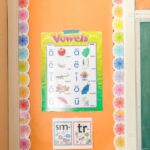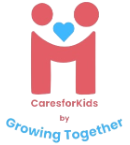A Parent’s Guide to Teaching Phonics at Home
Teaching phonics to your child to read can be a daunting task. As a parent, you want to do everything in your power to ensure that your child has the best possible foundation for their reading journey. But wait – what exactly is phonics? And when should I start teaching it? This guide will answer those questions and more!
What is Phonics?
Phonics is a way to teach children how to read, spell and write. It’s a systematic approach that uses sounds as the building blocks for words. For example: In the word “cat”, “c” is pronounced /k/. When you break down this word into its individual sounds, it becomes easier for your child to understand how each letter makes up one part of speech–in this case, consonant + vowel + consonant = three syllables!
What Age Should a Child Know Phonics?
Phonics is a concept that should be taught to children at a young age. If you would like your child to be a good reader, they must comprehend how words are constructed of distinct sounds and combinations of letters.
Phonics training can begin as early as two or three years old, but the optimal time is between the ages of four and six years old, because this is when children begin to learn how the alphabet represents sounds in words.
Research indicates that children are prepared to begin learning phonics once they have mastered the identification of all alphabets, typically occurring between the ages of three and four. For pre-readers to grasp the fundamental concept of phonics, they must first be familiar with the appearance of the letters.
Step-by-Step Guide to Teaching Phonics

Step 1: Creating a Friendly Environment
- Encourage your child to read and write every day.
- Help your child identify letters, words, sentences and paragraphs in books you are reading together. This helps them start to understand how print works in books (and later on their own).
Step 2: Introducing Letter Sounds
- Introduce letter sounds by reading short vowels and consonant blends with them as you point out the corresponding letters on the page. For example: “This is an A sound.” Or “This word has three E’s.” You can also ask questions such as “What sound does this word make?” or “Where would we find this sound?” This helps children learn about phonics without feeling overwhelmed by too much information at once!
- Utilizing flashcards or sand letters can enhance your child’s auditory learning, visual learning, and sensory memory, leading to improved retention.
Step 3: Introduce Blends
- Introduce blends by reading short words with them as you point out the corresponding letters on the page.
- Using an analogy-focused method in education can efficiently help your child identify and comprehend patterns in words with alike sounds and spellings. This technique allows them to establish relationships between related words, streamlining the learning experience and promoting a more robust understanding of language principles.
Step 4: Introducing Alternative Sounds for Letters and Tricky Words
- Children may encounter words in books that do not follow the basic alphabetic code they have learned.
- Examples include common words like ‘the’, ‘to’, ‘said’, ‘of’, and ‘was’. These words have spellings that do not match the letter-sound correspondences previously taught.
- Phonics programs often label these words as irregular words, tricky words, or common exception words.
- To read these words effectively, children need gradual exposure to the advanced alphabetic code components.
Step 5: Mastering the Art of Blending and Segmenting Complex Words
In this stage, we dive into the world of words with adjacent consonants and two-syllable words, expanding your child’s reading and pronunciation skills.
Exploring Words with Adjacent Consonants
Often referred to as ‘consonant clusters’, ‘consonant blends’, or simply ‘blends’, the term ‘adjacent consonants’ has gained popularity in UK schools lately.
- Take the word ‘swim’ as an example. It begins with two adjacent consonants, ‘s’ and ‘w’, requiring us to pronounce both letter sounds and blend them together to form ‘sw’.
- Similarly, the word ‘frog’ starts with the consonant ‘fr’, while ‘belt’ ends with the consonant ‘lt’.
- Some words even have multiple sets of adjacent consonants, such as ‘crust’, ‘trunk’, ‘frost’, and ‘drank’.
While many children can easily tackle these words, others may initially struggle with reading words containing adjacent consonants. Remember to be patient and provide ample support during this learning process.
Step 6: Unraveling the Mystery of Digraphs and Trigraphs
English is often considered more challenging to learn as a reading language compared to many others. One of the primary reasons is the greater number of sounds in spoken English than there are letters in the alphabet. To overcome this hurdle, we employ groups of letters to represent specific sounds.
Digraphs, Trigraphs, and Letter Teams: A New Way to Read
- For instance, when ‘s’ and ‘h’ are combined in words like ‘shop’ or ‘fish’, we pronounce a sound similar to the one we make when asking someone to be quiet: ‘sh’. Instead of vocalizing the individual letter sounds, the two letters represent a single sound.
- Likewise, in words like ‘out’ or ‘cloud’, we pronounce a sound resembling the one we might make if we dropped something on our toe; ‘o’ and ‘u’ are not sounded out individually.
- Numerous other examples exist where groups of letters join forces to create a new sound. Some combinations even consist of three letters, like ‘igh’ in ‘high’ and ‘light’, which sounds like the letter name for ‘i’.
Phonics instructors often refer to these letter combinations as ‘digraphs’ and ‘trigraphs’, but we believe the term ‘letter teams’ is more child-friendly.
It’s essential to distinguish these letter teams from the adjacent consonants or consonant blends we discussed earlier. In consonant blends, such as the ‘fr’ in ‘frog’, each letter still represents a separate sound and doesn’t require recognition as a special letter pairing.
In contrast, digraphs represent single sounds that often differ from the individual letters composing them. To read words containing them correctly, these digraphs must be recognized.
Here are a few more examples of digraphs or letter teams children need to learn:
- The ‘ch’ letter team, found in words like ‘chips’, ‘chat’, or ‘lunch’.
- The ‘ai’ letter team appears in various words such as ‘rain’, ‘mail’, and ‘tail’.
- The ‘ee’ letter team sounds the same as the name for the letter ‘e’, and examples include ‘feet’, ‘peek’, and ‘tree’.
- The ‘ur’ sound in words like ‘fur’, ‘blur’.
- The ‘igh’ letter team, found in words like ‘high’, ‘light’ and ‘sight’.
- The ‘oa’ letter team, found in common words like ‘coat’, ‘soap’, and ‘toast’, sounds like the letter name for ‘o’.
- The ‘oi’ letter team appears in words such as ‘coin’, ‘point’, and ‘soil’.
- The ‘or’ sound is found in words like ‘corn’, ‘fork’, and ‘torn’.
- The ‘ph’ letter team represents an alternative way of pronouncing the ‘f’ sound, appearing in familiar words like ‘elephant’ and ‘dolphin’.
By understanding and mastering these letter teams, children can significantly improve their reading and writing skills.
If you want to discover more about different parenting style types, read here!
The importance of practice, practice and more practice
Phonics is a skill that needs to be learnt over time and with practice. One of the best ways to get your child started on their reading journey is by reading aloud to them regularly at home.
When parents read aloud they can model what sounds are in words, how they should sound when they say them out loud, which letters go together to make those sounds, how long each word should take and so on. This will help children develop phonological awareness – another critical component of early literacy development.
Exploring the Four Types of Phonics

There are four different types of approaches that you can use to help your child learn how to read. Each method has advantages and disadvantages, so it’s best to try out a few different ones before deciding which works best for your child.
A. Synthetic Phonics
Synthetic phonics is a systematic and explicit approach to teaching phonics.
- Focuses on teaching individual letter-sound correspondences and blending them to form words.
- Encourages children to decode words by sounding out and blending each letter sound.
- Often considered the most effective method for teaching early reading skills.
Teaching techniques include:
- Introducing and practicing letter-sound correspondences in a structured sequence.
- Using flashcards and visual aids to reinforce letter-sound recognition.
- Providing opportunities for children to practice blending sounds to form words.
- Incorporating games and activities that focus on phoneme manipulation (e.g., segmenting and blending).
- Offering regular assessments to monitor students’ progress and mastery of phonics skills.
B. Analytic Phonics
Analytic phonics is an approach that teaches children to analyze and compare words to identify common phonics patterns.
- Focuses on whole words and larger units of sound, such as onsets and rimes (e.g., m-oon, sp-oon, s-oon).
- Encourages children to use their knowledge of known words to decode new words with similar patterns.
- Less emphasis on sounding out individual letter sounds compared to synthetic phonics.
Teaching techniques include:
- Introducing and discussing common phonics patterns, such as onsets and rimes.
- Using word sorts and word walls to help students identify and compare word patterns.
- Encouraging students to find and decode words with similar patterns in texts.
- Providing practice activities that require students to apply their knowledge of phonics patterns to decode new words.
- Using games and activities that reinforce the concept of pattern recognition in decoding.
C. Embedded Phonics
Embedded phonics refers to the approach of teaching phonics within the context of meaningful texts. This method is less systematic and explicit compared to other phonics approaches.
- Focuses on teaching phonics skills as they arise naturally in the reading process.
- Encourages children to use contextual clues to decode unfamiliar words.
- Often used in conjunction with whole language instruction.
Teaching techniques include:
- During guided reading sessions, children engage in reading activities where they are provided with texts that specifically incorporate phonics skills they are currently learning.
- Encouraging students to use picture cues and sentence context to read words.
- Highlighting and discussing specific phonics patterns within the text.
- Providing opportunities for children to practice decoding words with similar phonics patterns.
D. Analogy-Based Phonics
Analogy-based phonics involves teaching kids to use their knowledge of known words to decode unfamiliar words with similar patterns. This method helps children recognize and apply common letter-sound relationships.
- Focuses on word families, or groups of words with similar patterns (e.g., cat, bat, rat).
- Encourages students to use analogies to decode new words based on known words. If a student knows that the word “jump” has the “ump” sound, they can use that analogy to decode the word “bump” or “lump.” If a student knows that the word “bake” has the “ake” sound, they can use that analogy to decode the word “cake” or “lake.”
Teaching techniques include:
- Introducing and discussing word families or rimes (e.g., -at, -ump, -ake).
- Using word ladders(Puzzles where players transform words by changing one letter at a time) or word sorts (categorizing words on the basis of families, pronunciation, etc) to help children identify and compare word patterns.
- Encouraging students to find and decode words with similar patterns in texts.
- Providing practice activities that require kids to apply their knowledge of word families to decode new words.
- Using games and activities that reinforce the concept of analogies in decoding. You can try these games and activities;
- Analogy Bingo: Make bingo cards with word pairs like “cat – hat,” “cake – bake,” “jump – bump.” Call words randomly, and students identify analogy relationships on their cards.
- Analogies Memory Game: Create word card pairs like “cat – hat,” “bake – cake,” “jump – bump” with analogy relationships. Shuffle and place face down. Students take turns flipping two cards to find matching analogy pairs.
- Analogies Sorting: Give students word card sets like “man – woman,” “dog – puppy,” “tree – leaf” with analogy relationships. Students sort cards into groups based on the relationship and explain their connections.
Conclusion
Phonics is an important skill that can help your child learn to read faster and with greater accuracy. I hope this guide has been helpful and informative. If you have any questions or concerns, please don’t hesitate to reach out!









